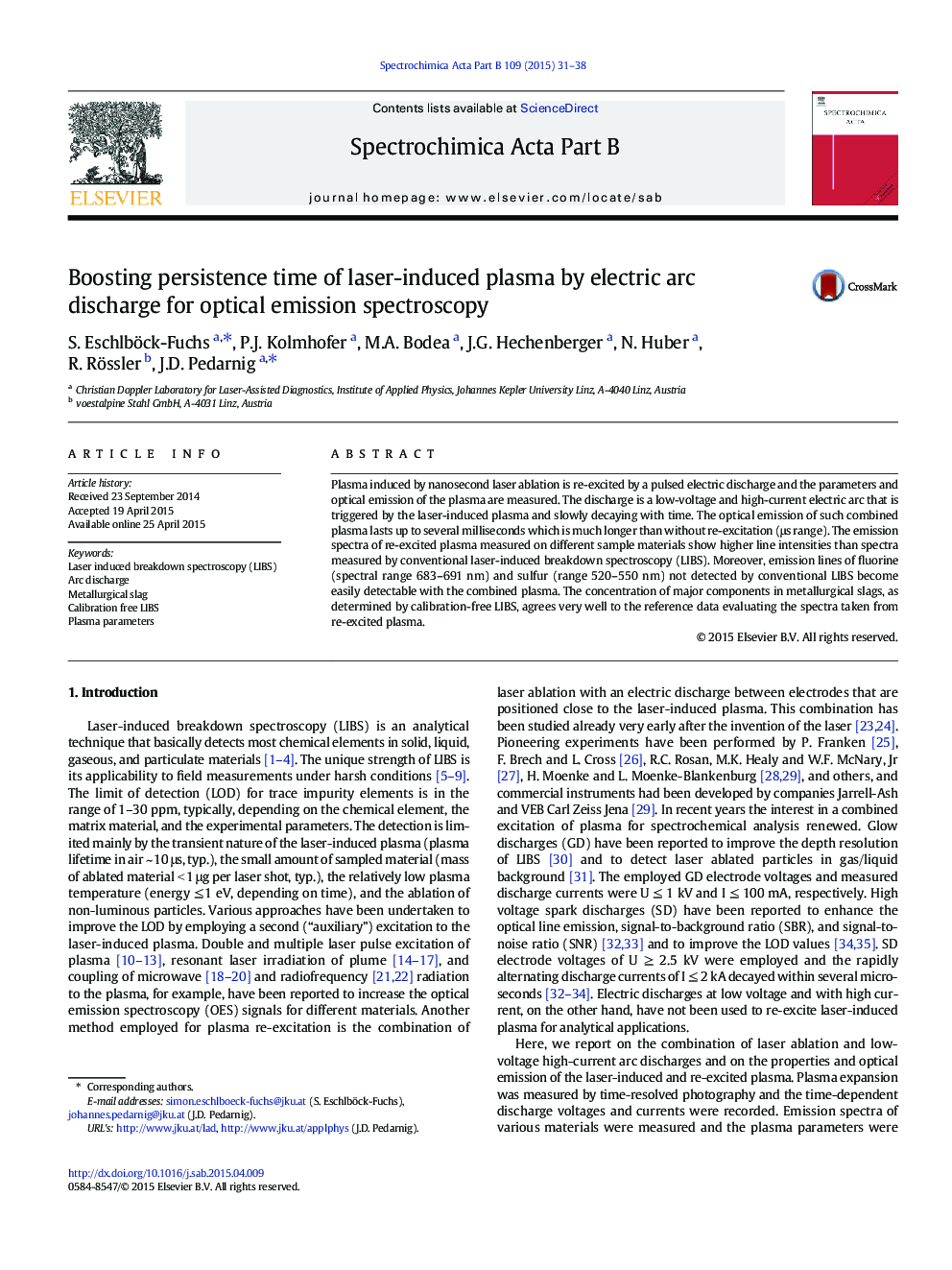| Article ID | Journal | Published Year | Pages | File Type |
|---|---|---|---|---|
| 1240057 | Spectrochimica Acta Part B: Atomic Spectroscopy | 2015 | 8 Pages |
•Persistence time of laser-induced plasma in air is increased from ~ 10 μs to ~ 1 ms.•Laser-induced plasma triggers an electric arc discharge that boosts the plasma.•The combined laser-arc plasma is in LTE state over very long time (ms range).•CF-LIBS method delivers accurate results evaluating spectra of combined plasma.•Emission from S and F, not detected by LIBS, is detected with combined plasma.
Plasma induced by nanosecond laser ablation is re-excited by a pulsed electric discharge and the parameters and optical emission of the plasma are measured. The discharge is a low-voltage and high-current electric arc that is triggered by the laser-induced plasma and slowly decaying with time. The optical emission of such combined plasma lasts up to several milliseconds which is much longer than without re-excitation (μs range). The emission spectra of re-excited plasma measured on different sample materials show higher line intensities than spectra measured by conventional laser-induced breakdown spectroscopy (LIBS). Moreover, emission lines of fluorine (spectral range 683–691 nm) and sulfur (range 520–550 nm) not detected by conventional LIBS become easily detectable with the combined plasma. The concentration of major components in metallurgical slags, as determined by calibration-free LIBS, agrees very well to the reference data evaluating the spectra taken from re-excited plasma.
